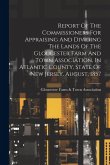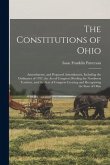Comparing Virginia and Pennsylvania, Majewski explains how slavery undermined the development of the southern economy.
A House Dividing compares Virginia and Pennsylvania to answer a crucial question of American history: how did slavery undermine the development of the southern economy? Extensive archival research reveals that in the first decades of the nineteenth century, local residents in each state financed transportation improvements to raise land values and spur commercial growth. In the 1830s, however, Philadelphia capitalists began financing Pennsylvania's railroad network, eventually building integrated systems that reached deep within the Midwest. Virginia's railroads, still dependent upon local investment and funds from the state government, remained a collection of local lines without western connections. The lack of a great city that could provide capital and traffic for large-scale railroads was the Achilles' heel of Virginia's slave economy. The chains of slavery, Virginians learned to their dismay, also shackled the invisible hand of the market.
Review quote:
'This scholarly work is also a very pleasurable read.' Open History
Table of contents:
Acknowledgments; Introduction: Regional Development in Comparative Perspective; 1. Developmental corporations in a slave-labor society; 2. Developmental corporations in a free-labor society; 3. Railroads and local development; 4. The local politics of market development; 5. Urban capital and the superiority of Pennsylvania's transportation network; 6. Why Antebellum Virginians never developed a big city; Epilogue; Appendix; Bibliography; Index.
Hinweis: Dieser Artikel kann nur an eine deutsche Lieferadresse ausgeliefert werden.
A House Dividing compares Virginia and Pennsylvania to answer a crucial question of American history: how did slavery undermine the development of the southern economy? Extensive archival research reveals that in the first decades of the nineteenth century, local residents in each state financed transportation improvements to raise land values and spur commercial growth. In the 1830s, however, Philadelphia capitalists began financing Pennsylvania's railroad network, eventually building integrated systems that reached deep within the Midwest. Virginia's railroads, still dependent upon local investment and funds from the state government, remained a collection of local lines without western connections. The lack of a great city that could provide capital and traffic for large-scale railroads was the Achilles' heel of Virginia's slave economy. The chains of slavery, Virginians learned to their dismay, also shackled the invisible hand of the market.
Review quote:
'This scholarly work is also a very pleasurable read.' Open History
Table of contents:
Acknowledgments; Introduction: Regional Development in Comparative Perspective; 1. Developmental corporations in a slave-labor society; 2. Developmental corporations in a free-labor society; 3. Railroads and local development; 4. The local politics of market development; 5. Urban capital and the superiority of Pennsylvania's transportation network; 6. Why Antebellum Virginians never developed a big city; Epilogue; Appendix; Bibliography; Index.
Hinweis: Dieser Artikel kann nur an eine deutsche Lieferadresse ausgeliefert werden.








